A More Inclusive Home Away from Home
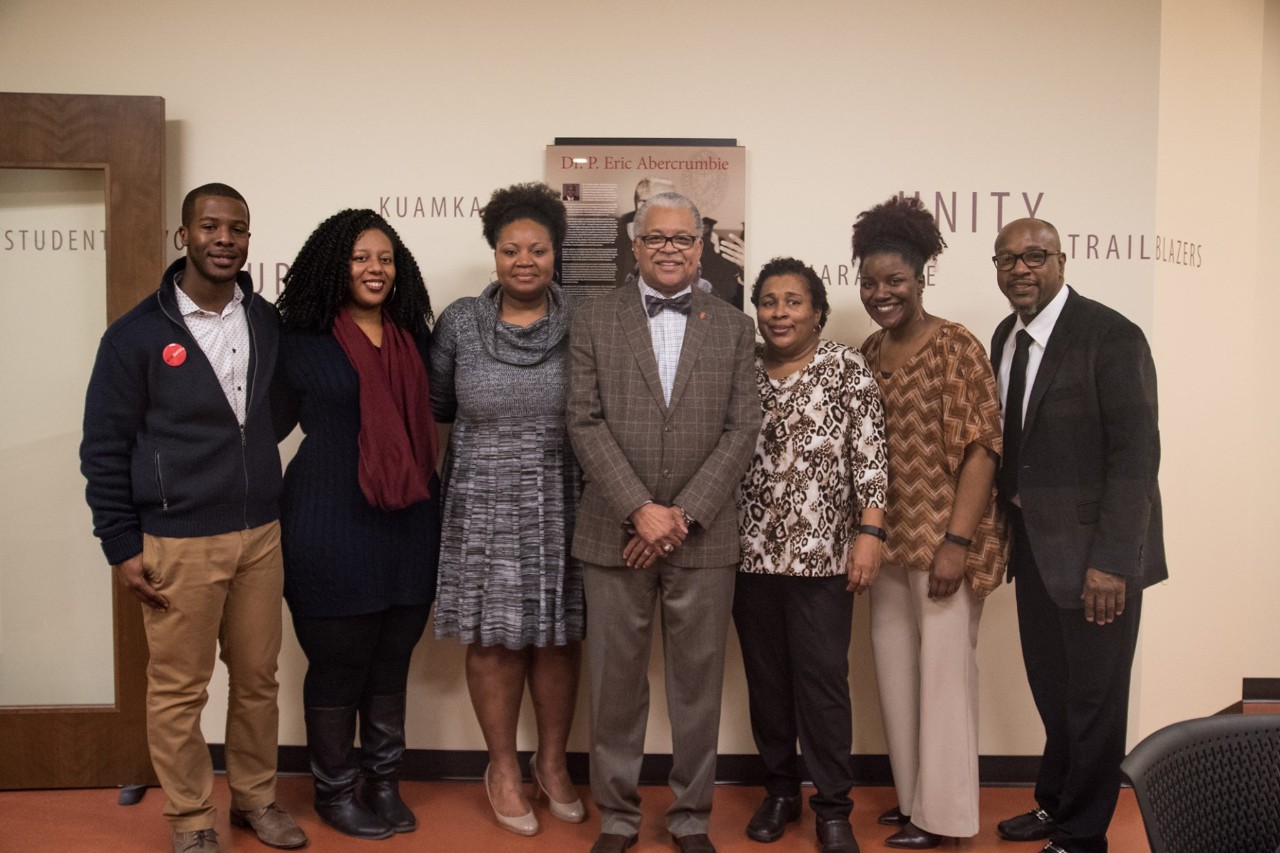
The AACRC staff with Dr. Eric Abercrombie (center), A&S alumnus, previous AACRC director, and a foundational person in the development of the AACRC.
In its 25th anniversary year, UC’s African American Cultural & Resource Center making concerted efforts to engage marginalized groups
By Jonathan Goolsby
It’s been a long journey for Black students at the University of Cincinnati. And it’s one that’s ongoing.
Dr. P. Eric Abercrumbie, UC Executive Director for Special Initiatives and Community Relations and former director of the university’s African American Cultural & Resource Center (AACRC) has been part of that journey for nearly 45 years, having first arrived on campus as a residence hall counselor in September, 1972.
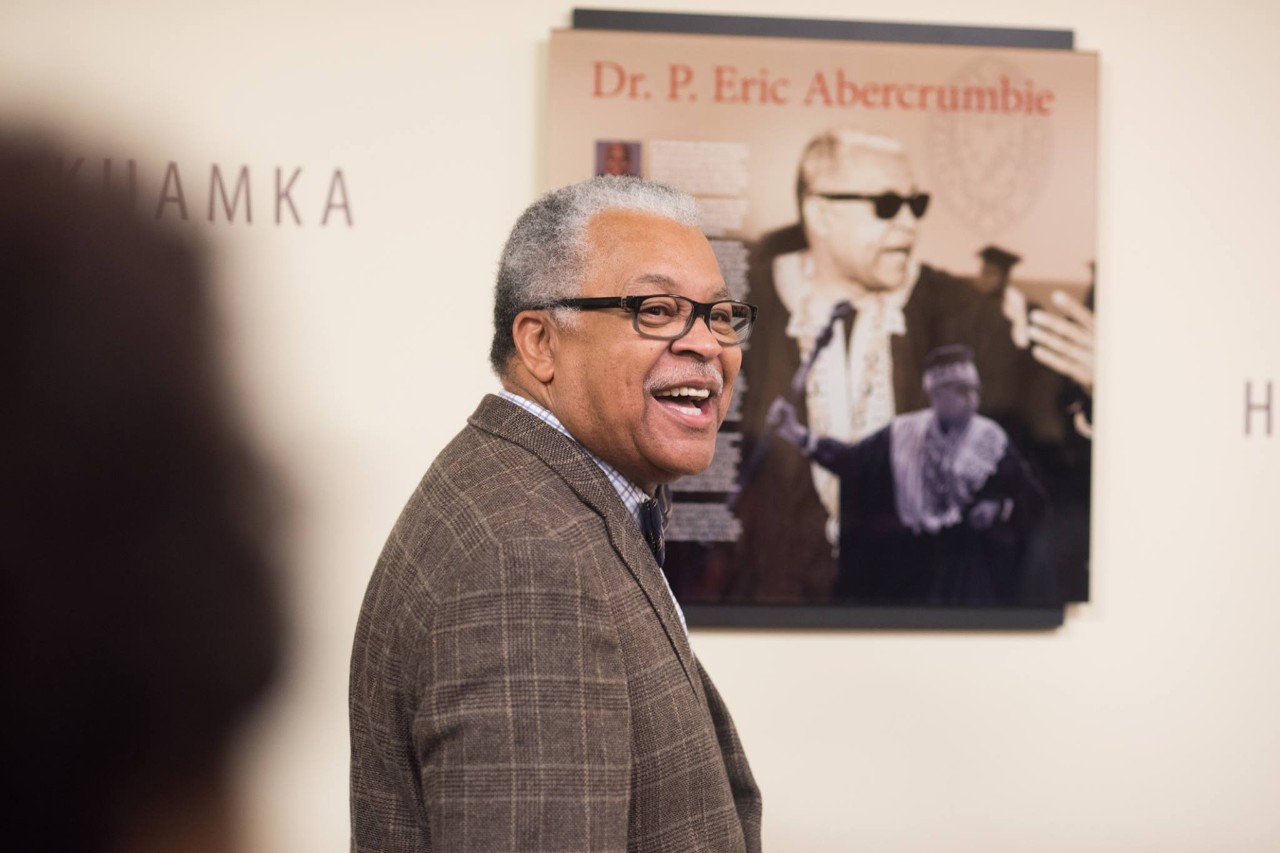
Dr. Abercrombie is surprised at the January, 2017, with a plaque dedicated to him as part of the opening of the new AACRC foyer.
“To me,” he told an audience gathered in Tangeman University Center’s Great Hall for a panel discussion on the AACRC’s 25-year history, the experience of being Black at UC in the 1970s was like, “in some ways, being in a desert with no water.”
Indeed, when Abercrumbie began his career here, only about a decade had passed since students of color had finally been admitted to the university’s dormitories.
“This is not the same place it was,” he said.
One outward sign of progress is the existence of the AACRC itself. The day of the ribbon-cutting, September 24, 1991, Abercrumbie said, “was one of the happiest days of my life here at the University of Cincinnati.”
Its opening felt, to him, like a long-overdue admission that Black students had not traditionally received fair treatment at UC, and an expression of the University’s willingness to do more to improve the campus experience for everyone — especially Black students.
Building Cultural Competency
In the early 1990s, one of members of the planning committee that helped pave the way for a brick-and-mortar cultural center was Psychology undergraduate Bleuzette Marshall. She later took her MEd and PhD from UC and, today, serves as the University’s Vice President for Equality and Inclusion.
“It was to be a meeting place, a gathering place, a home away from home,” Marshall explained. At the time, UC’s Black diaspora students lacked “a touchpoint to connect.”
The AACRC, Marshall believes, satisfies the need for a place where Black students can gather, research and collaborate which, in turn, boosts those students’ confidence and self-esteem — critical factors in their academic success.

Dr. Bleuzette Marshall speaks during events celebrating Black History Month. Marshall has also been honored on the AACRC Wall of History.
Simultaneously, the center fosters dialogue between all demographic groups on campus, helping people who engage with it to build “cultural competency.” Its programs build awareness, generate knowledge, improve intercultural skills and, ultimately, change attitudes and behaviors, Marshall said.
In that regard, Marshall noted, the AACRC — and centers like it at universities worldwide — function a bit like laboratories for the humanities.
“It provides study and reflection,” she said. “It provides a place to put theory into action, especially in regards to liberal arts education.”
“When you study liberal arts, you’re able to gaze into the eyes of humanity,” Marshall emphasized. “You understand people’s needs and desires and better understand what a person needs to achieve their highest potential.”
“They cared. They gave it a special touch.”
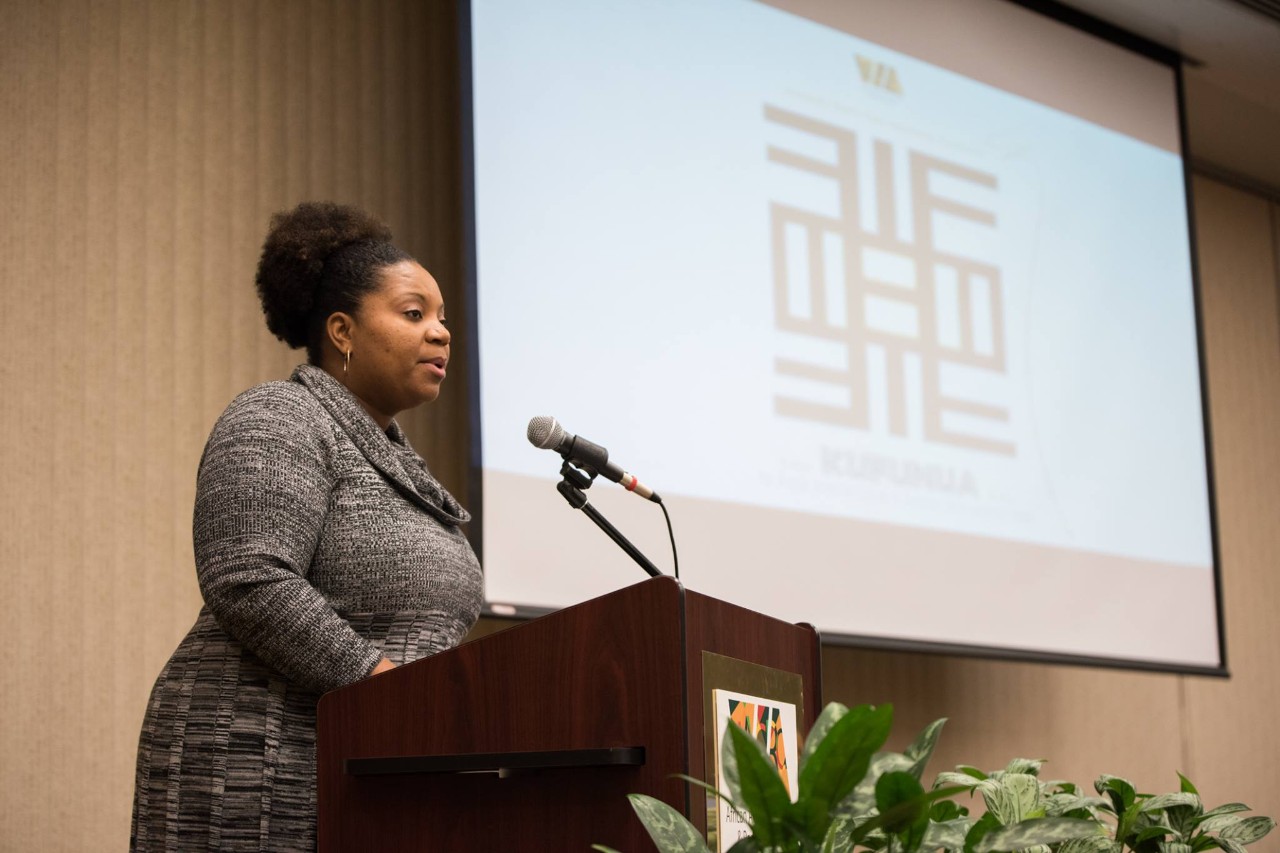
Ewaniki "Ms. Niki" Moore-Hawkins, Director of the AACRC, speaks during the celebration of the AACRC Foyer.
One person who attributes her professional success at least in part to her undergraduate involvement with the AACRC is the center’s current director, Ewaniki Moore-Hawkins.
Moore-Hawkins received both her Bachelor’s and Master’s degrees at UC. When she first arrived at the University in Fall Quarter, 1997, she set about searching for a place on campus where she could feel like she — without question or qualification — belonged.
“I was looking for that sense of family and that sense of home,” she remembered. “I stumbled upon [the AACRC] for choir auditions.”
She was immediately struck by the staff’s willingness to reach out and help her adjust to an unfamiliar environment.
“They cared. They gave it a special touch,” she explained. “They were knowledgeable about campus resources. They had expertise in various areas. They were connected across campus. They were connected within the community. And for a student who [was] challenged and trying to navigate this UC system, that was key.”
Today, Moore-Hawkins and her staff nurture students in the same manner she felt nurtured. And they’re seeking ways to reach out to segments that may heretofore have been underserved or underrepresented.
“Over the last two years or so, we’ve been looking at who we don’t see on a day-to-day basis,” she said. “What populations are we not touching? What populations are we not reaching or not engaging with effectively?”
Black graduate students are among those now receiving increased outreach from the AACRC.
Aaryn Green is the AACRC’s graduate assistant. She’s also a Sociology doctoral candidate who plans to defend her dissertation in 2018. And she emphasized that her involvement with the Center has helped to keep her on track.
“It provides me a space where I can raise concerns and questions as a marginalized student, provides a community to motivate and encourage me, and helps to advocate for my needs and concerns,” Green said.
At the same time, she noted, the Center has proved to be an invaluable resource in her research.
“It helped me recruit the majority of respondents for my dissertation research by allowing me to advertise and utilize materials and programming space. It also introduced me to a great network of UC faculty, staff, and administrators,” she said.
Additionally, the AACRC’s programs have given her important opportunities to network with other academics — including graduate students outside the College of Arts and Sciences, and at other universities. She met many while participating in the Center’s annual Spring Break Tour.
Due to Moore-Hawkins’s energies, Green said, “Black graduate students have established more of a community here at UC. They mentor undergraduate students, are more knowledgeable about campus resources and are better acclimated.”
Before, Green said, graduate students weren’t specifically incorporated in the AACRC’s signature programming. Now they are.
“Graduate student accomplishments are now formally recognized at Kuamka and Ushindi,” she observed. “Graduate students are given their own Village Keeper session at the Akwaaba Black Student Welcome. This increases Black grad student visibility, which is great for current grad students and [for] those undergraduates interested in graduate school.”’
First Black Transfer Student Crowned “Ms. Kuamka”
Beyond graduate students, the AACRC has renewed efforts to reach out to transfer students.
“Before, there was no one to really help guide them,” Moore-Hawkins said.
So, she has been proactive, coordinating with Admissions to identify incoming Black transfer students, “So that I can welcome them properly, tell them what resources are here at UC, let them know there is a home away from home here, even though you didn’t start [here] your first year.’”
Indeed, earlier this year, Shaumia Turner became the first transfer student crowned “Ms. Kuamka” in the Center’s annual celebration of students and academic achievements.
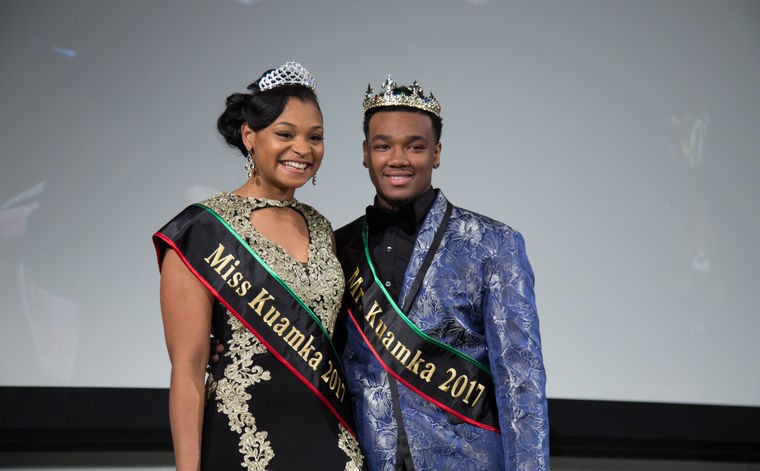
Shaumia Turner and Tyler Adams were crowned as Mr. and Ms. Kuamka in January, 2017
AACRC Partners with the LGBTQ Center
Black LGBTQ students, too, have been receiving more focused support under Moore-Hawkins’s watch.
“That’s a population that sometimes — especially in the Black community — there was a stigma. We’re trying to make our campus more inclusive, as well as our Cultural Center, and so we’ve partnered with the LGBTQ Center to do that,” she reported.
But increased outreach isn’t the only item on Moore-Hawkins’s agenda. She and her staff have sought ways to further enrich students’ educational experiences.
Having learned that many students of color perceive significant barriers to studying abroad and, thus, don’t consider pursuing international studies, Moore-Hawkins set about trying to make her constituents more aware of the opportunities available to them.
The AACRC now helps to guide students toward research opportunities, grants and scholarships that would enable them to go overseas and broaden their perspectives.
Many students already view the AACRC as a home away from home, Moore-Hawkins said. Her goal is to make that home more inclusive and, thus, more inspirational to larger groups of incoming students.
One of Moore-Hawkins’s methods of ensuring those future classes will be bigger has been to work to boost recruitment and retention of Black students who, due to historic circumstances and recent controversies alike, might not otherwise have a positive impression of the University. Under her leadership, the AACRC is hosting more visits from prospective middle and high schoolers.
“For them, there’s so much history in the city and there are so many negative things they hear from the community about UC,” Moore-Hawkins empathized.
“We’re able to dispel the myth. When we bring them to the Cultural Center and they meet with our habari gani ambassadors, they say, ‘You know what, I can see myself here at UC, and it was because of the Center.”
“You can ask Admissions,” she asserted, smiling. “There’s a lot of Black students, they’ll go through the programs, but once they come to the Center, they sign on the dotted line, because they know it’s somewhere where they want to be.”
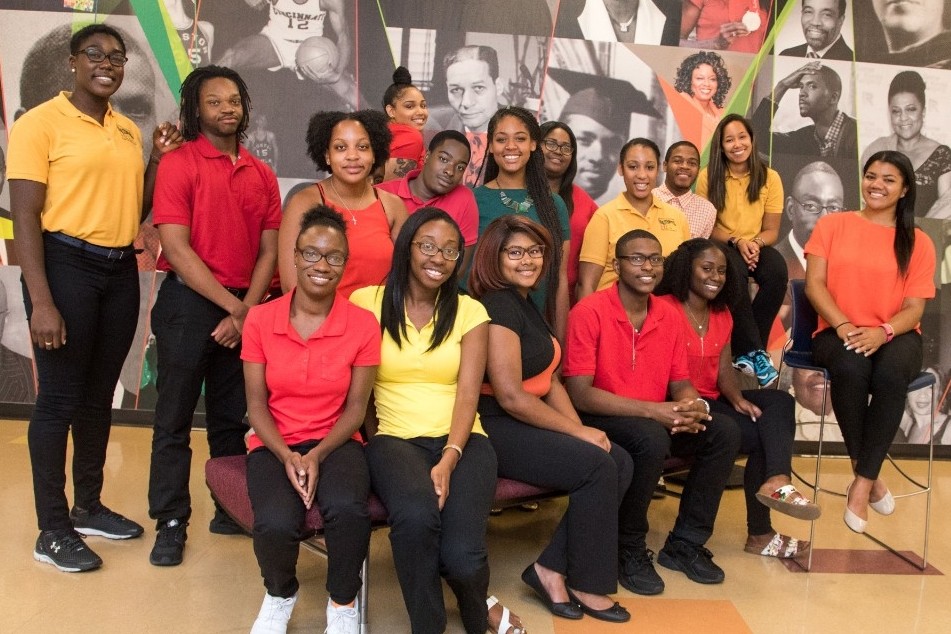
2016-2017 Habari Gani (“Good News”)Ambassadors
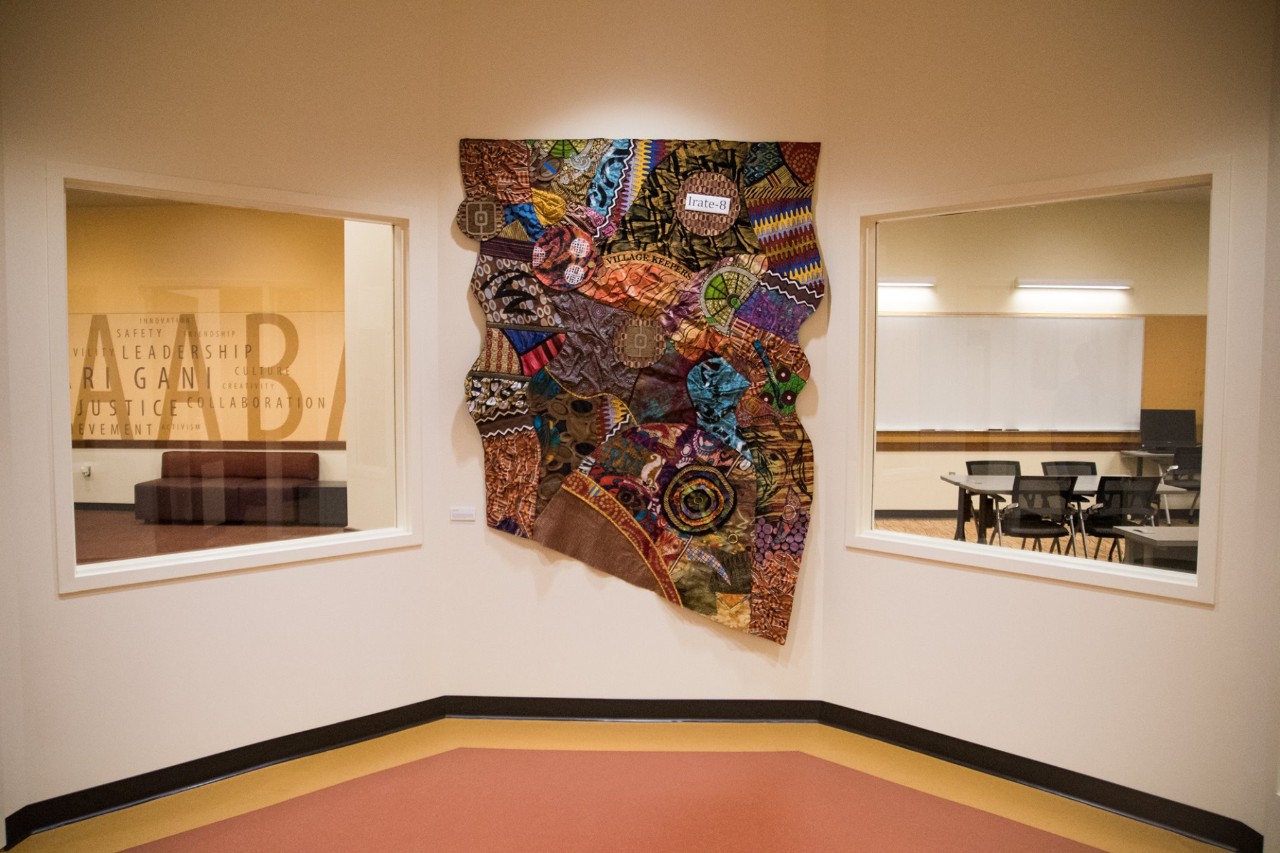
The New AACRC Grand Foyer features an original piece commissioned by fiber artist and DAAP Professor Cynthia Lockhart!
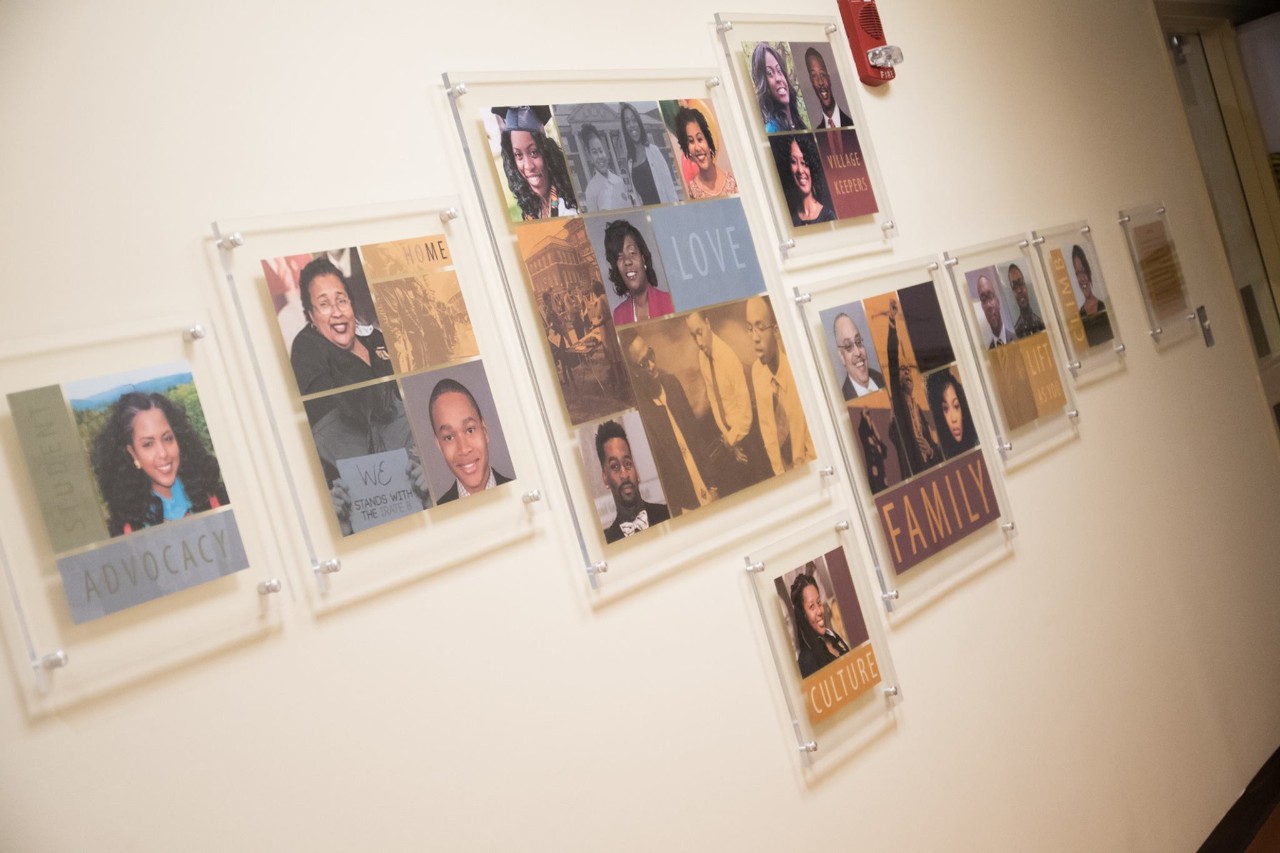
The new AACRC space also acknowledges a new group of Village Keepers